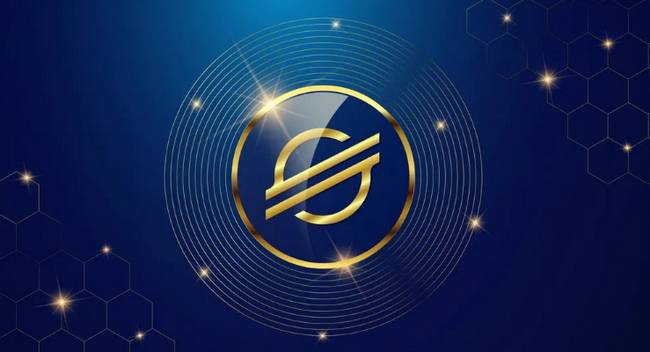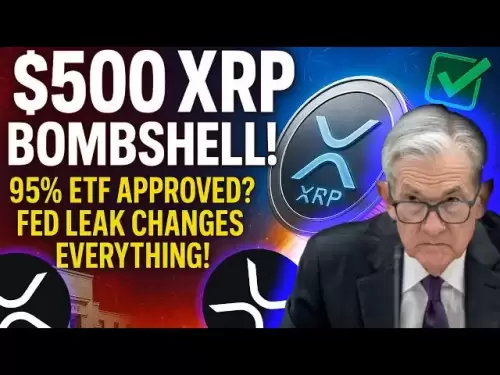-
 Bitcoin
Bitcoin $118900
1.66% -
 Ethereum
Ethereum $3735
1.35% -
 XRP
XRP $3.506
0.71% -
 Tether USDt
Tether USDt $1.000
-0.01% -
 BNB
BNB $799.4
5.78% -
 Solana
Solana $202.0
1.87% -
 USDC
USDC $0.9999
0.00% -
 Dogecoin
Dogecoin $0.2661
1.89% -
 Cardano
Cardano $0.8877
1.59% -
 TRON
TRON $0.3173
2.45% -
 Hyperliquid
Hyperliquid $45.00
2.59% -
 Stellar
Stellar $0.4723
3.40% -
 Sui
Sui $3.970
1.32% -
 Chainlink
Chainlink $19.67
1.94% -
 Hedera
Hedera $0.2710
1.99% -
 Avalanche
Avalanche $25.74
-0.01% -
 Bitcoin Cash
Bitcoin Cash $528.1
1.98% -
 Litecoin
Litecoin $120.1
3.57% -
 Shiba Inu
Shiba Inu $0.00001525
1.26% -
 UNUS SED LEO
UNUS SED LEO $8.989
-0.01% -
 Toncoin
Toncoin $3.304
1.74% -
 Polkadot
Polkadot $4.531
3.38% -
 Uniswap
Uniswap $10.74
2.51% -
 Ethena USDe
Ethena USDe $1.001
0.00% -
 Monero
Monero $325.5
2.44% -
 Pepe
Pepe $0.00001413
1.31% -
 Bitget Token
Bitget Token $4.860
0.85% -
 Dai
Dai $0.9999
0.01% -
 Aave
Aave $307.3
-2.07% -
 Bittensor
Bittensor $448.8
2.91%
What is XLM coin? A comprehensive introduction to XLM coin projects in one article
XLM Coin, the native cryptocurrency of the Stellar network, is designed to facilitate fast, secure, and low-cost cross-border transactions, promoting financial inclusion and innovation.
Oct 02, 2024 at 05:42 pm

What is XLM Coin? A Comprehensive Introduction to the XLM Coin Project
1. Understanding the XLM Coin
Stellar Lumens (XLM) is a decentralized, open-source blockchain platform that aims to facilitate fast, secure, and low-cost cross-border transactions. It was created by the Stellar Development Foundation, a non-profit organization dedicated to promoting financial inclusion and innovation.
XLM coin is the native cryptocurrency of the Stellar network. It is used to power transactions, pay network fees, and secure the network through a consensus mechanism called the Stellar Consensus Protocol (SCP).
2. Key Features of XLM Coin
- Speed and Efficiency: XLM transactions can be completed in seconds and processed at a high volume, making it suitable for large-scale and real-time payments.
- Low Transaction Fees: Stellar transactions typically involve a fraction of a penny in fees, making them cost-effective for small and frequent payments.
- Interoperability: XLM can be exchanged with over 200 currencies, including fiat and other cryptocurrencies, facilitating cross-border payments.
- Security and Reliability: The Stellar Consensus Protocol ensures the security and resilience of the network, preventing fraud and double-spending.
3. Use Cases of XLM Coin
XLM coin has gained adoption for various use cases, including:
- Cross-border Payments: Stellar's low transaction fees and high speed make it an attractive option for international remittances and remittances.
- Stablecoins: XLM has been used to issue stablecoins, which are cryptocurrencies pegged to the value of fiat currencies like USD or EUR.
- Decentralized Finance (DeFi): XLM is used in DeFi applications such as lending, borrowing, and yield farming.
- Non-Profit Fund Distribution: Stellar has been employed by non-profit organizations to facilitate the distribution of donations to underprivileged communities.
4. Technical Details of XLM Coin
- Ticker Symbol: XLM
- Blockchain: Stellar Core
- Proof-of-Work Algorithm: Stellar Consensus Protocol
- Block Time: 2-5 seconds
- Transaction Finality: 2-6 seconds
- Current Supply: 23.2 billion XLM
- Total Supply: 50 billion XLM
5. Where to Buy and Store XLM Coin
XLM coin can be bought on major cryptocurrency exchanges such as Binance, Coinbase, and Kraken. It can be stored in hardware wallets, software wallets, or the Stellar Lumen XLM Wallet.
Disclaimer:info@kdj.com
The information provided is not trading advice. kdj.com does not assume any responsibility for any investments made based on the information provided in this article. Cryptocurrencies are highly volatile and it is highly recommended that you invest with caution after thorough research!
If you believe that the content used on this website infringes your copyright, please contact us immediately (info@kdj.com) and we will delete it promptly.
- IREN's Bitcoin Mining Prowess Meets AI: An SOTP Valuation Deep Dive
- 2025-07-23 12:30:12
- Arca, PENDLE, and Kraken: Navigating DeFi's Institutional Currents
- 2025-07-23 11:10:11
- Bitcoin, Bedford, and a Real-Life Batman: Peter McCormack's Crime Crusade
- 2025-07-23 12:30:12
- Bitcoin Betting, Small Investors, and the Specter of Dollar Collapse: A New Yorker's Take
- 2025-07-23 08:50:11
- OpenFundNet, the Web3 Boom, and Flare's Backbone: A Deep Dive
- 2025-07-23 12:50:11
- Altcoins, Binance Futures, and Bitcoin Rotation: Catching the Crypto Wave
- 2025-07-23 09:10:11
Related knowledge

What is Ethereum’s Slashing mechanism and how to punish malicious behavior?
Feb 20,2025 at 03:08am
Key PointsOverview of slashingDifferent types of slashing in EthereumIncentives and consequences of slashingIdentifying and reporting slashed validato...

What is the verifier node of Ethereum and how to become a verifier?
Feb 19,2025 at 06:00pm
The Verifier Node of Ethereum: A Comprehensive GuideKey Points:What is a Verifier Node?How to Become a Verifier NodeResponsibilities and Rewards of a ...

What is Ethereum’s staking, and how to participate and earn money?
Feb 19,2025 at 04:37pm
Key Points:Understanding Ethereum's Staking MechanismSteps to Participate in StakingBenefits and Rewards of StakingSecurity and Risk ConsiderationsTec...

What is Ethereum’s DAO (Decentralized Autonomous Organization) and how does it work?
Feb 20,2025 at 03:12am
Key PointsDefinition and Structure of a DAOGovernance and Decision-Making in DAOsBenefits and Use Cases of DAOsChallenges and Limitations of DAOsWhat ...

What is Ethereum's multi-signature wallet and how to improve security?
Feb 20,2025 at 02:18pm
Key Points:Understanding the Concept of a Multi-Signature WalletBenefits and Drawbacks of Multisig WalletsRequirements for Setting Up a Multisig Walle...

What is Ethereum's oracle and how to provide data for smart contracts?
Feb 21,2025 at 01:30am
Key Points:Understanding the concept of oracles in EthereumExploring different types of oraclesDetailed guide on how to provide data for smart contrac...

What is Ethereum’s Slashing mechanism and how to punish malicious behavior?
Feb 20,2025 at 03:08am
Key PointsOverview of slashingDifferent types of slashing in EthereumIncentives and consequences of slashingIdentifying and reporting slashed validato...

What is the verifier node of Ethereum and how to become a verifier?
Feb 19,2025 at 06:00pm
The Verifier Node of Ethereum: A Comprehensive GuideKey Points:What is a Verifier Node?How to Become a Verifier NodeResponsibilities and Rewards of a ...

What is Ethereum’s staking, and how to participate and earn money?
Feb 19,2025 at 04:37pm
Key Points:Understanding Ethereum's Staking MechanismSteps to Participate in StakingBenefits and Rewards of StakingSecurity and Risk ConsiderationsTec...

What is Ethereum’s DAO (Decentralized Autonomous Organization) and how does it work?
Feb 20,2025 at 03:12am
Key PointsDefinition and Structure of a DAOGovernance and Decision-Making in DAOsBenefits and Use Cases of DAOsChallenges and Limitations of DAOsWhat ...

What is Ethereum's multi-signature wallet and how to improve security?
Feb 20,2025 at 02:18pm
Key Points:Understanding the Concept of a Multi-Signature WalletBenefits and Drawbacks of Multisig WalletsRequirements for Setting Up a Multisig Walle...

What is Ethereum's oracle and how to provide data for smart contracts?
Feb 21,2025 at 01:30am
Key Points:Understanding the concept of oracles in EthereumExploring different types of oraclesDetailed guide on how to provide data for smart contrac...
See all articles

























































































